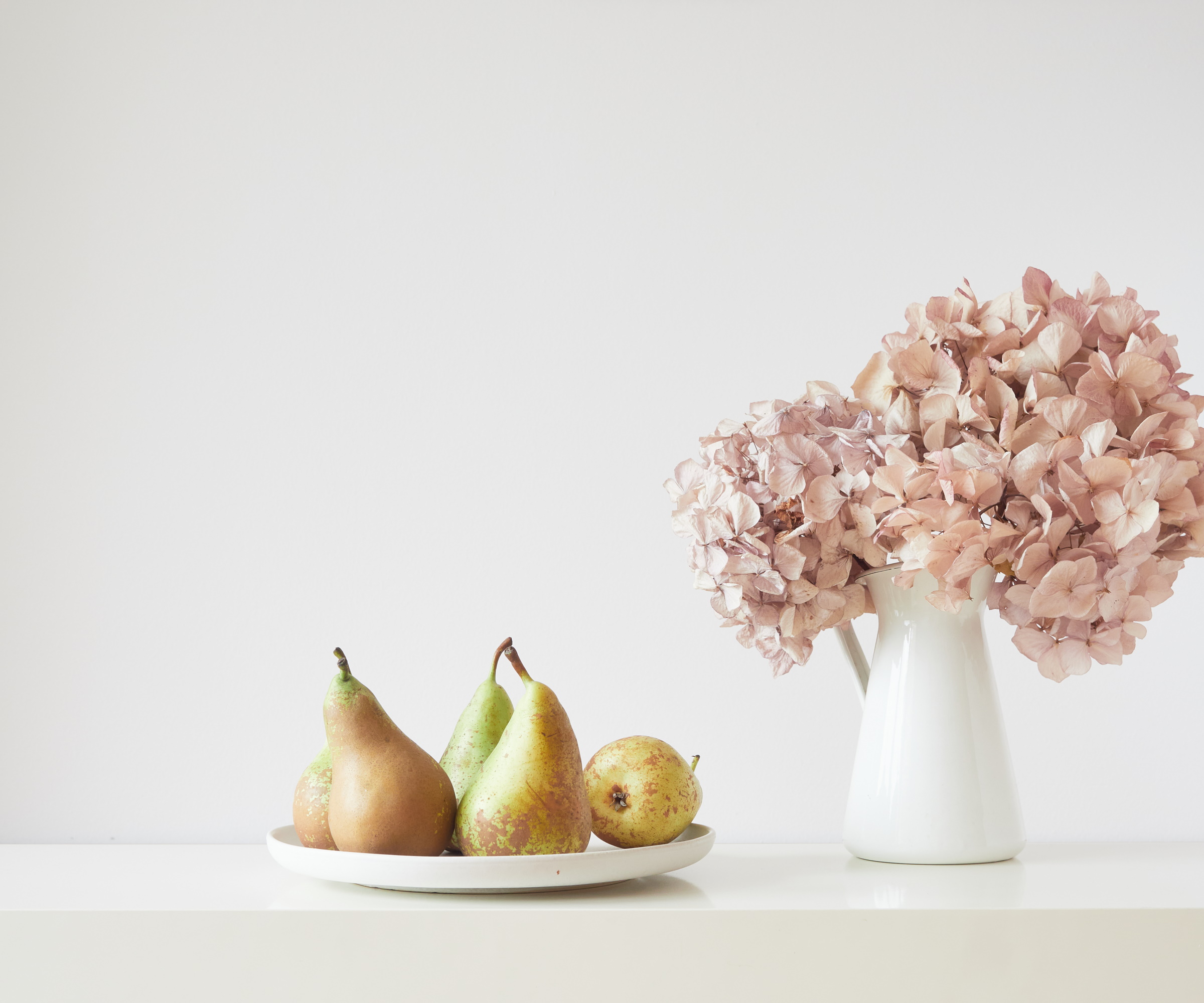How to dry hydrangeas – our easy guide to preserving flowers at home
Learn how to dry hydrangeas and create beautiful, long-lasting arrangements and bouquets for your home


The great news is learning how to dry hydrangeas shouldn't take you long. Preserving these large, blousy blooms doesn't require much effort; do it right and you'll be left with wonderfully vintage-looking dried flowers to enjoy for years to come.
There are a few different ways to dry hydrangeas, and you can utilize the beautifully muted blooms in a variety of display ideas, from hydrangea wreaths and pom-poms to upside-down hanging bouquets. They're a stunning floral addition for weddings and table centerpieces, and can add a lovely fall feel to your outdoor décor too.
Plus, if you've already spent the time learning how to grow hydrangeas, it's worth getting the most enjoyment you can from these beautiful blooms.

Learn how to dry hydrangeas in water
If you already know when to plant hydrangeas, chances are you've watched them grow in your garden and observed longingly as the brightly petalled flowers fade away, wishing you could preserve them somehow.
The good news is that although the color of hydrangeas changes to a more muted shade once dried, you'll still have a beautifully full flower blossom that remains.
The most popular method of drying hydrangeas is with water – although that might sound a little counterintuitive. Jo Lambell, founder of Beards and Daisies, explains the process:
- Whether you grow hydrangeas in pots or in the ground, cut your hydrangeas at an angle so there's at least 12in (30cm) or so of the stem.
- Remove the leaves from the stems and place them in a vase of water, covering about half of the stems. Though it may seem counterproductive, using water actually helps to slow down the drying process, otherwise the flowers can turn brown.
- Keep your vase somewhere cool, and out of direct sunlight as this will damage the petals.
- As the water evaporates, the flowers will begin to dry out. By the time all the water has disappeared (usually in a week or two), your hydrangeas will be perfectly dried and ready to use for whatever purpose you'd like.

How to air dry hydrangeas
If you don't fancy the water drying method detailed above, it's certainly possible to learn how to dry flowers like hydrangeas using just the air – but these can become a little more brittle than their water-dried counterparts.
Design expertise in your inbox – from inspiring decorating ideas and beautiful celebrity homes to practical gardening advice and shopping round-ups.
For this method, hang each individual stem upside down and secure to a line with a clothes peg or some twine. Choose a spot that's cool and doesn't receive direct sunlight, then wait a few weeks.
Bear in mind that it's not necessary to hang them upside down though – only if you think the stems are thin enough that they might break under the weight of the flower bloom during the drying process.
A top tip to test their readiness is to try snapping the dried stem. If it's easy to snap then your hydrangeas are fully dried out.


Jo Lambell is the founder of online plant retailer Beards and Daisies. She is fanatical about plants, and brings together a carefully curated selection of indoor houseplants, featuring some lesser spotted varieties that you might not find in your local garden center.
When to pick hydrangeas for drying
If you're planning to dry your favorite hydrangea varieties, it's best to leave the blooms on the plant until they've gone slightly past their prime. That way, their natural tendency to start drying at the end of the season works in your favor. Late summer is usually your best bet.
There's a sweet spot, though. Picking them too early will result in their leaves shrivelling up, while leaving them too late will cause the blooms to turn brown, which won't look particularly nice when dried.
Check in on your flowers about six weeks after they've opened. Jo Lambell tells us, 'You'll want to cut your stems when your hydrangea is just past its peak – wait until it has fully bloomed and you can see some of the petals becoming thinner and more papery. This is your time!'

FAQs
How long will dried hydrangeas last?
If you've learned how to dry hydrangeas properly, they will remain in good condition for up to two years. Try to keep them out of direct sunlight to prolong their lifespan.
You can use your dried hydrangeas to decorate your home by putting them in vases, incorporating them into wreaths, or simply hanging them up high in a corner of the room.
How can I stop my dried hydrangeas dropping petals?
There's a simple trick to keep dried hydrangeas from falling apart – and that's using hairspray. Once they've dried out sufficiently, tie the stems together in a loose bouquet then lay them flat on a dry surface. Using an aerosol, give the flowers a quick spray: this will help to stop the petals from crumbling if accidentally touched.
There's nothing better than prolonging the enjoyment of your garden-grown hydrangea blooms by drying them, and now is an ideal time to start picking them. Make sure you protect your plants as the weather gets colder by winterizing hydrangea, so you can enjoy their abundant flowers the following year. Plus, if you like the idea of drying flowers, you might like to know how to dry strawflowers or what the best plants for seedheads are to grow in your yard.

Freelance writer and author Flora Baker is a keen amateur gardener and houseplant enthusiast. Her small garden in South London is a constant work in progress as she gets to grips with snail prevention, DIY trellises and what to plant in shady spots overrun with ivy.